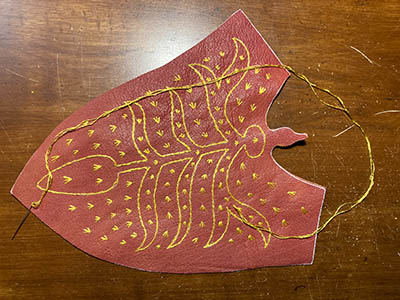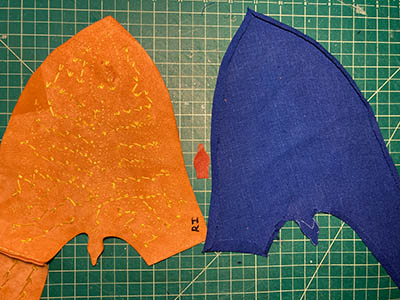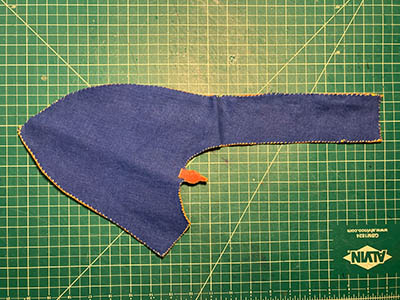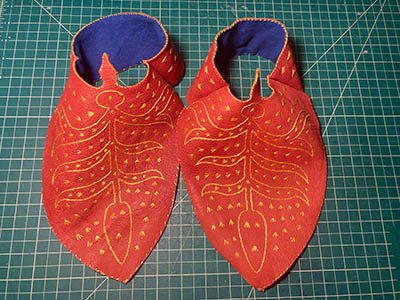Ottoman Embroidery
Adding to my past leather embroidery projects, this one arises from a single 55-year-old, black-and-white photo of a shoe in the Topkapı Palace Museum in Türkiye (Atasoy, N. 1969. "Shoes in the Topkapi Palace Museum" in Journal of the Regional Cultural Institute (Iran, Pakistan, Turkey), 2.1: 5–31). This pair was made for an elevation ceremony and although I immediately tried to find a way to request modern photos upon accepting this project, a lead to the proper online form arrived way too late (and may not have been processed in time to be useful in any case).
According to Atasoy, "[a]part from shoes and boots decorated with pearls and precious stones, we possess also some, where the leather has been embroidered like cloth (fig.18). In a single boot that we have in the collection, the leather is completely embroidered with red and blue thread in a pattern of stylised carnations, roses and tulips; it is unlined and has leather soles, the lining presumably having been removed when it was worn out." Given that the illustrated item is clearly not a boot, neither the color of the leather, nor the color of the thread, nor the color of any lining can be determined. Based on various illustrations of Ottoman clothes, red leather, golden silk thread, and blue lining seem to be appropriate for this project. We happened to have a beautiful blue linen on hand so that was used here, although silk would perhaps be a better choice.

With only a single view of the original, its pattern is not clear so I assumed a very basic two-piece one. The red leather for the uppers was purchased at Tandy where it lacked any details about animal type or processing, but it's fairly thin and flexible and soft: proper qualities for embroidery and indoor wear by a gentleman of the court.
I copied the main floral design of the original by eye, sketching it onto paper, then used carbon paper to transfer it to cardstock to make a stencil. I used a white gel pen to trace the design onto the leather. The small arrows were added ad-hoc during the embroidery. Because the back part of the shoes cannot be seen in the phone, I added some arrows there as well.
A chain stitch was used for the main, long lines. The first three little arrows were added individually, however it quickly became apparent that it would drive me crazy to apply them all that way. Thus, I would add one arrow, then jump to the next position and add another one without cutting the thread, and so on, making it far quicker to add them in groups. On the other hand, this choice forced the use of a lining to protect the long underside embroidery threads. On the third hand, the shoes look much nicer with a lining having been sewn in.
I attached the lining with a whip stitch using the same silk embroidery thread. When it came to dealing with the vamp tab near the ankle, I cut a reflected piece of leather to not only stiffen the tab, but also to clamp a bit of lining between the two tabs to hold it in place and facilitate a continuous whip stitch along the edge.
As for the interior sole embroidery apparent in the original photograph, it's not clear to me whether that is executed on leather or cloth. It seems likely to be a separate embroidered insole, and I intend to obtain more information about the shoe and better, additional photos of it in the near future, but for now that aspect was not attempted.
The embroidery took me about 8.5 hours for the flowers and another 6.5 for all of the little arrows.
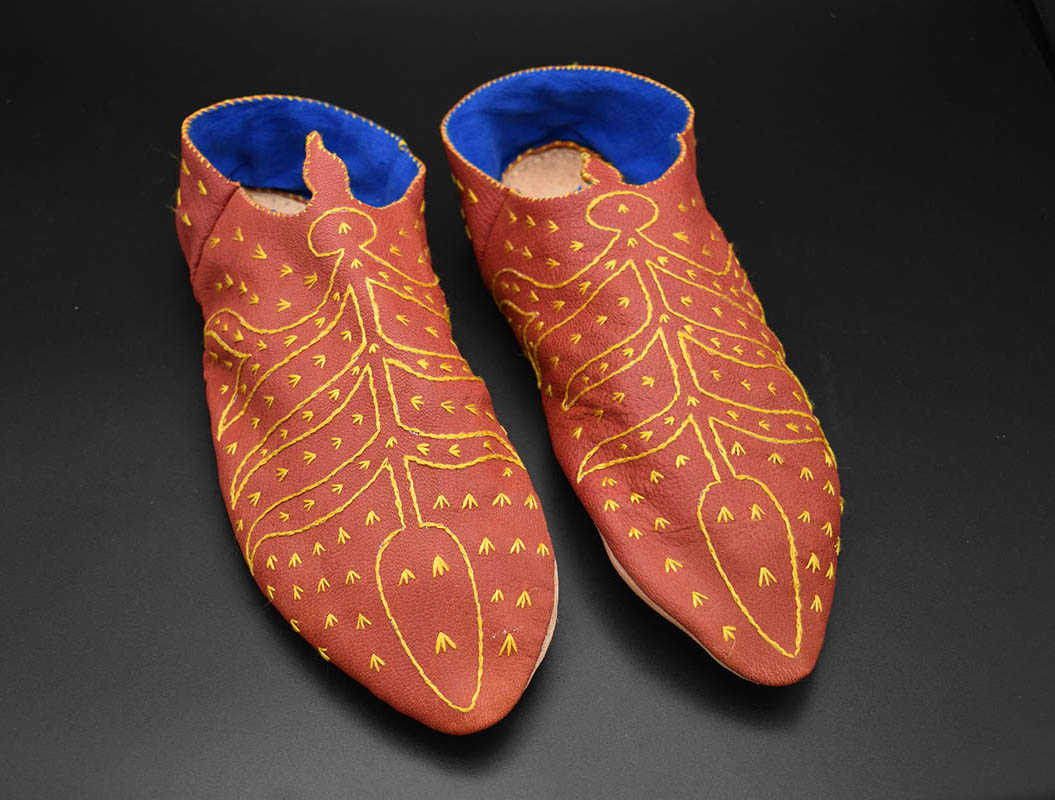
Last updated April 2, 2024.


